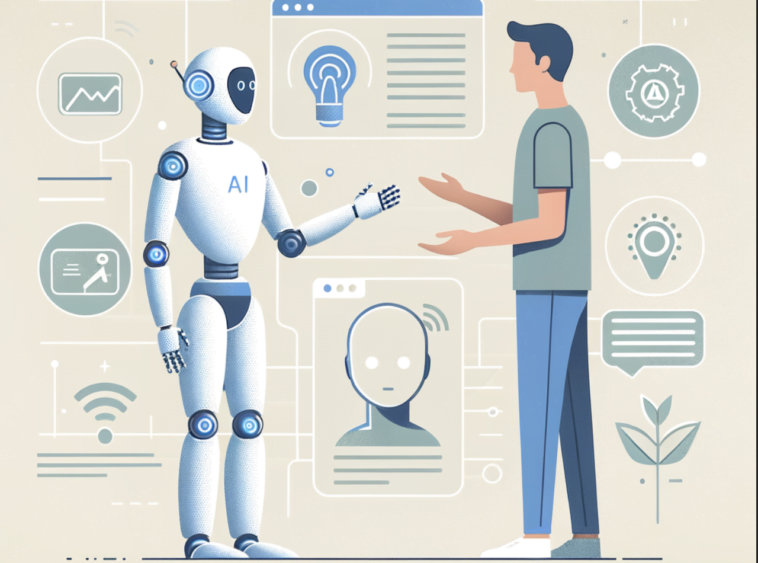Human-Computer Interaction (HCI) is the study and design of how humans interact with computers and other digital technologies. In recent years, the integration of Artificial Intelligence (AI) into HCI has proven to be a game-changer. AI has the potential to significantly improve the user experience by enabling more intuitive and intelligent interactions between humans and machines. This article will explore the various ways in which AI is revolutionizing HCI and enhancing our interaction with computers.
Role of AI in Improving Human-Computer Interaction
AI plays a crucial role in improving HCI by enabling computers to understand and respond to human behavior and preferences. Traditional HCI relies on predefined input methods, such as keyboard and mouse, which can be limiting. AI allows for more natural and intuitive interactions, such as voice commands and gestures recognition. By using AI techniques like pattern recognition and machine learning, computers can adapt and learn from user behavior, making the interaction more personalized and efficient. AI also facilitates the automation of routine tasks, freeing users from repetitive actions and allowing them to focus on more complex and creative activities.
Understanding User Behavior for Enhanced Interaction
One of the key aspects of enhancing HCI with AI is the ability to understand and predict user behavior. By analyzing user data, AI algorithms can identify patterns and preferences, enabling computers to personalize the interaction accordingly. For example, AI can learn from a user’s past choices and suggest relevant content or provide personalized recommendations. AI can also analyze user emotions and engagement levels to gauge their satisfaction and adapt the interface accordingly. This understanding of user behavior allows for a more tailored and satisng user experience.
Implementing Natural Language Processing in HCI
Natural Language Processing (NLP) is a branch of AI that focuses on enabling computers to understand and communicate with humans in natural language. By integrating NLP into HCI, computers can interpret and respond to voice commands, making the interaction more seamless and intuitive. NLP-powered virtual assistants, like Siri and Alexa, have become increasingly popular, allowing users to perform tasks, get information, and control devices using natural language. NLP also enables computers to understand and generate text, making it easier for users to input and interact with information. The integration of NLP in HCI opens up new possibilities for hands-free and voice-controlled interactions.
Read also: How to Tell If a Video is a Deepfake: A Layman’s Guide
Future Prospects: AI-driven HCI Innovations
The future prospects of AI-driven HCI are promising. As AI technology continues to advance, we can expect even more innovative and intelligent interactions between humans and computers. AI algorithms will become more accurate in understanding user behavior and preferences, leading to highly personalized and adaptive interfaces. Furthermore, the integration of AI with other emerging technologies, such as augmented reality and virtual reality, will create immersive and interactive experiences. With AI as an integral part of HCI, we can look forward to a future where computers and digital technologies seamlessly integrate into our daily lives, enhancing productivity and enriching our overall user experience.

